The Matilda II MkIII British Infantry Tank
This Matilda II Tank A12 called Defiance can be found at the French Tank Museum in Saumur in the Loire Valley. The Museum is called Musée des Blindés ou Association des Amis du Musée des Blindés, 1043, route de Fontevraud, 49400 Saumur, France www.museedesblindes.fr . The word Blindés means armoured.
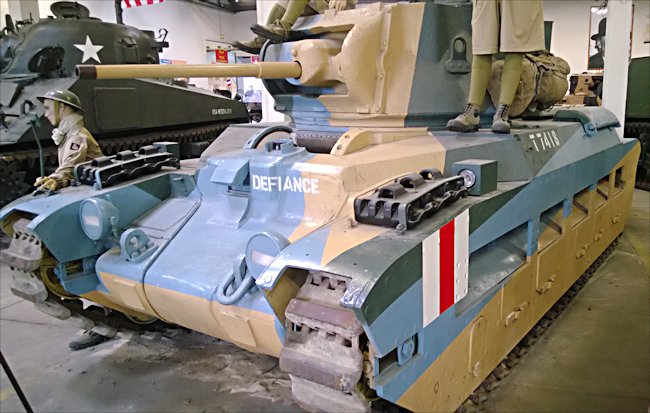
Matilda II British Infantry Tank A12 called Defiance
The MKIII version of this Matilda II meant that it had a new Leyland diesel engine fitted in place of original AEC engine. The Camoflaugfe mpattern is called 'Caunter' and was to meant for fast Cruiser tanks as it was probably meant to confuse the exact position of a tank at the head of the dust storm they always created in the desert. It was painted on slow heavy Matilda II tanks but they were probably too slow to benefit from this scheme.
Matilda II Tanks attack German Flank in 1940
The German Blitzkrieg attack had reached the English Channel and driven a wedge between the French and British Armies in northern France. The Allies decided to attack the German flank just south of Arras. It was going to be a two pronged attack with the French coming from the south and the British attacking from the north. The French failed to join the British.
The Matilda II tanks were given the job of leading the assault on the 21st May 1940. The British only had 48 field guns and 88 tanks. Rommel had 218 tanks available in his 7th Panzer Division. Despite the heavy odds ageist them they launched their attack. Matilda tank crew member Trooper Raymond Atkinson of the 7th Royal Tank Regiment recalls, "I was stopped at a little village just outside Arras. We had met up with the other tanks. We had about six Matilda tanks and headed south as fast as we could. We were told to shoot to kill."
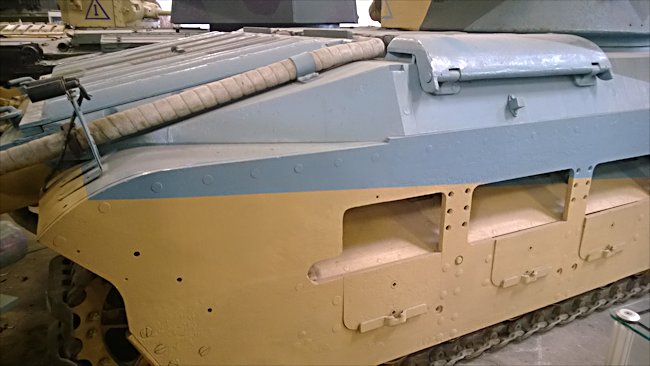
Armoured track guards on the Matilda II designed to protect the wheels and track from light anti-tank weapons.
The Matilda II’s 2pdr gun could destroy most German armour at a range of almost one mile. Its most impressive feature was its 78mm frontal armour making it the best protected tank on the 1940 battlefield. It was this tank along with the French Char B1-bis that caused the Germans to be nervous. It was not fast but the thick frontal armour could not be penetrated by any tank gun the Germans had. The main anti-tank gun the Germans had at that time was a 37mm. This proved so ineffective that it was nicknamed ‘the army knocking machine’. It did nothing except make a knock knock sound on the British tank’s armour before it was time to move the gun, fast to a different location. The shells just bounced off the armour.
With nothing able to stop the advance the British just drove through German positions. This caused panic through their lines. With his forces wavering and in retreat, Rommel rushed to the scene to take personal command. In Rommel’s memoirs he wrote, "When we arrived at Wailly, southwest of Arras, the enemy tank fire had created chaos and confusion amongst our troops. I drove off to a hill west of the village. There we found a light anti-aircraft group and several 37mm anti-tank guns located in a small wood. At the same time several enemy tanks were advancing down the road. It was an extremely tight spot.
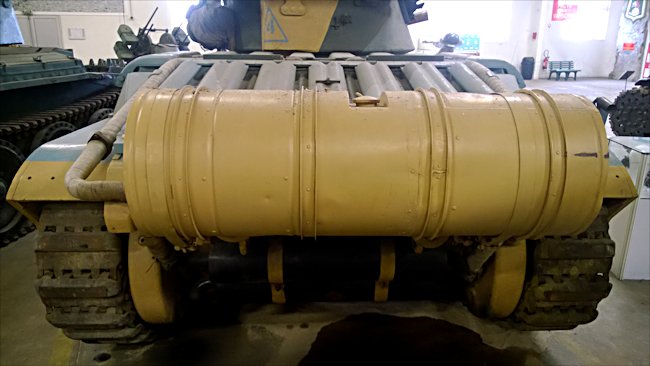
Rear of a British Army Matilda II Tank
Erwin Rommel ordered the 88mm anti-aircraft guns to deploy in a defensive line and start firing on the approaching Matilda II heavy tanks. Rommel recorded, "Every gun was ordered to open rapid fire immediately. I personally gave each gun its target. With the enemy tanks so perilously close only rapid fire could save the situation. All I cared about was to halt the enemy tanks by heavy gun fire. Soon we succeed in putting them out of action. We then saw another group of tanks attacking so we directed our fire against them. Setting fire to sum, halting others and forcing the rest to retreat "
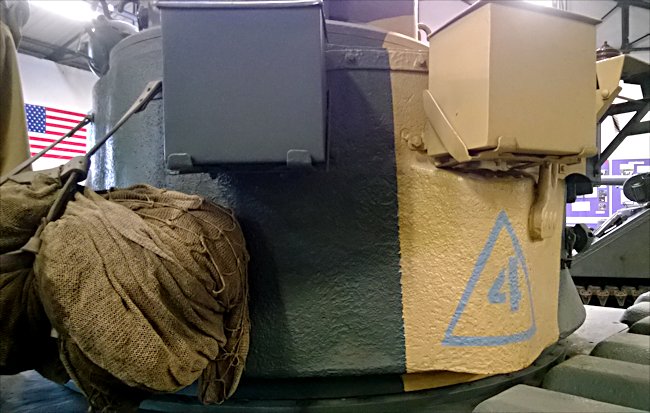
Rear view of a Matilda II Tank turret
This use of an anti-aircraft gun as anti-tank weapon halted the advance and not German panzers. The shells were able to stop the heavily armoured Matilda Tanks. Just 20 of the original 88 British tanks made it back to their lines. After the battle south of Arras the British Expeditionary Force had lost most of its armoured strength. Although the Matilda II tank was superior in armoured protection to nearly all German fighting vehicle around in 1940 it was an anti-aircraft gun that was its downfall in France not German tanks. The situation for the British was now absolutely desperate. The retreat to Dunkirk began.
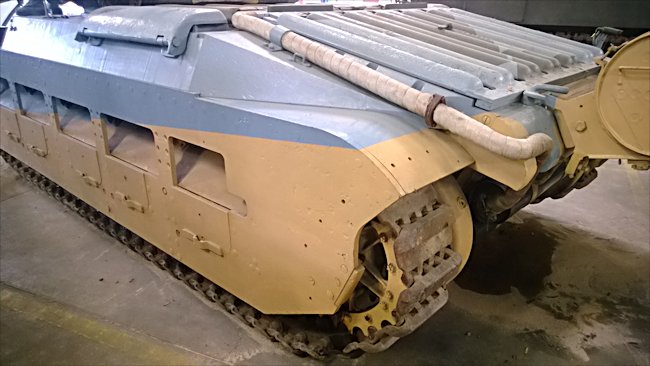
Rear and left side view of a British Infantry Tank MkII Matilda II
What was the effect of the 1940 British Arras attack?
The Matilda Mark II infantry tank was the exception to the thinly armoured British infantry tank. It was designed in the mid 1930s by Col Hudson's team at the Mechanisation Board. It benefited from the work conducted on the A7 medium tank, which never saw the light of day. In late 1937 about 165 Matilda II's were ordered, but due to the shape and size of the armour castings, the tank was not easy to mass-produce.
When war broke out in 1939, there were only two Matilda II's in service. It was heavily armoured with 78mm of armour on the front. This was twice that of the Panzer Mark II and III. But it was designed as an infantry support tank and therefore it was slow. It only had two pounder (40mm) main gun lacked real penetrating power.
When the three battalions of the Royal Tank Regiment were equipped with Matilda II tanks the confidence grew. Crews felt like they could take on any enemy tank. Unfortunately only one unit in the British army was ready to be shipped to France in 1939. That was the 4th Battalion, which was equipped with fifty Mark I A9 cruiser tanks and seven Mark VI A13 tanks.
Production of the Matilda II tanks remained agonisingly slow. It was not until the eve of the German blitzkrieg that the first tank brigade HQ and the 7th Royal Tank Regiment ship to France with a 23 Matilda's on their could strength. They also had 27 Mark I A9 cruiser tanks and seven Mark VI Vickers light tanks.
The early Matilda's shipped to France are easily identifiable as they have the large protective tube around the Vickers machine gun next to the main cannon. Late manufactured Matilda's were fitted with the smaller Besa 7.92mm fitted as the coaxial machine gun. Tank in the above photograph is a later reduced Matilda with a smaller Besa 7.92mm machine gun.
The slow-moving, lumbering British Matilda II tanks proved a nasty shock the German army. Despite being unavailable in sufficient numbers in 1940, lacking adequate infantry and artillery support, and no air cover, then measure of success had been due to their very thick 78 mm thick frontal armour. It proved impenetrable to the standards German 37 mm anti-tank gun.
Remarkably during the fighting around Arras, the Germans lost four times the number of casualties, they had suffered during the actual breakthrough into France. Some members of the press and British high command regarded the attack at Arras is a waste of dwindling resources, ill-conceived, poorly executed and achieving little result.
This was not the case, as the Germans were alarmed at the prospect of their Panzer divisions being cut-off before the infantry could reach them. While the Germans dismissed all French counter-attacks, the British attack at Arras with their Matilda tanks cause the German generals Kluge and kleist to pause.
General Guderian's drive on Calais, Boulogne and Dunkirk slowed. This ripple of unease past up the chain of command to Hitler, who halted his forces the two days. This allowed the British time to prepare their desperate rearguard defences at Dunkirk, destroyed their abandoned equipment and retreat back to England.
German General von Rundstedt gave praise to the British achievements at Arras after the battle, "A critical moment in the drive came just as my forces had reached the Channel. It was caused by British counterstrike southwards from Arras on 27th May 1940. It was, for a short time, feared that are armoured divisions would be cut off before the infantry divisions could come up and support them. None of the French counter-attacks carried a threat such as this one did", this was high praise indeed.
Where can I find other preserved Matilda II Tanks?
- Matilda II - Wheatcroft Collection, England
- Matilda II - Australian Armour and Artillery Museum, Cairns, QLD, Australia
- Matilda II - The Beck Museum, QLD, Australia
- Matilda II - Rod Keys Collection, QLD, Australia
- Matilda II - Bill Cheal Collection, Dubbo, NSW, Australia
- Matilda II - Camden aviation Museum, Camden, NSW, Australia
- Matilda II - Peter Ray Collection, Bilpin, NSW, Australia
- Matilda II - Base Borden Military Museum Canada
- Matilda II - Military Vehicle Technology Foundation USA
- Matilda II - Ordnance Museum USA
- Matilda II - Virginia Museum of Military Vehicles USA
- Matilda II - Cavalry Tank Museum India
- Matilda II - Armoured Corps Museum, Ahmednagar, Maharashtra, India
- Matilda II.A - Canadian Forces Base, Borden, Canada
- Matilda II MKIII - Bovington Tank Museum, England
- Matilda II MKIII - Musee des Blindes, Saumur, France
- Matilda II MKIII - The Beck Museum, QLD, Australia
- Matilda II MKIII - Army Training Facility, Singleton, NSW, Australia
- Matilda II MKIII - Park Memorial, Singleton, NSW, Australia
- Matilda II MKIII - Bastogne Barracks, Belgium
- Matilda II MKIII - Yad la-Shiryon, Latrun Israel
- Matilda II MKIII CS - Victory Park, Poklonnaya Gora, Moscow, Russia
- Matilda II MKIV - Army Museum Bandiana, VIC, Australia
- Matilda II MKIV - Henry Boyes Collection, NSW, Australia
- Matilda II MKIV - The Collings Foundation, Stow, MA, USA
- Matilda II MKIV - Imperial War Museum Duxford
- Matilda II MKIV CS - Tank Museum in Kubinka Russia
- Matilda II MKIV CS - Royal Australian Armoured Corps Memorial and Army Tank Museum - Puckapunyal, Victoria, Australia
- Matilda II MKIV CS - Royal New South Wales Lancers Memorial Museum, Australia
- Matilda II MKIV CS - John Bourke Collection, Australia
- Matilda II MKIV CS - Peter Ray Collection, NSW, Australia
- Matilda II Canal Defence Light - Bovington Tank Museum, England
- Matilda II Frog Flame Thrower - Private collection in Kingaroy, QLD, Australia
- Matilda II Frog Flame Thrower - Australian War Memorial, Canberra, Australia
- Matilda II Frog Flame Thrower - Royal Australian Armoured Corps Memorial and Army Tank Museum - Puckapunyal, Victoria, Australia
- Matilda II Hedgehog Mortar - Royal Australian Armoured Corps Memorial and Army Tank Museum - Puckapunyal, Victoria, Australia
- Matilda II MKIV Dozer - Royal Australian Armoured Corps Memorial and Army Tank Museum - Puckapunyal, Victoria, Australia
- Matilda II MKIV Dozer - Matt McMahon Collection, Oberon, NSW, Australia
- Matilda II MKIV Dozer - John Belfields Collection, Melbourne, VIC, Australia
- Source - Pierre-Oliver Buan - http://the.shadock.free.fr/Surviving_Panzers.html
WW2 tank books

